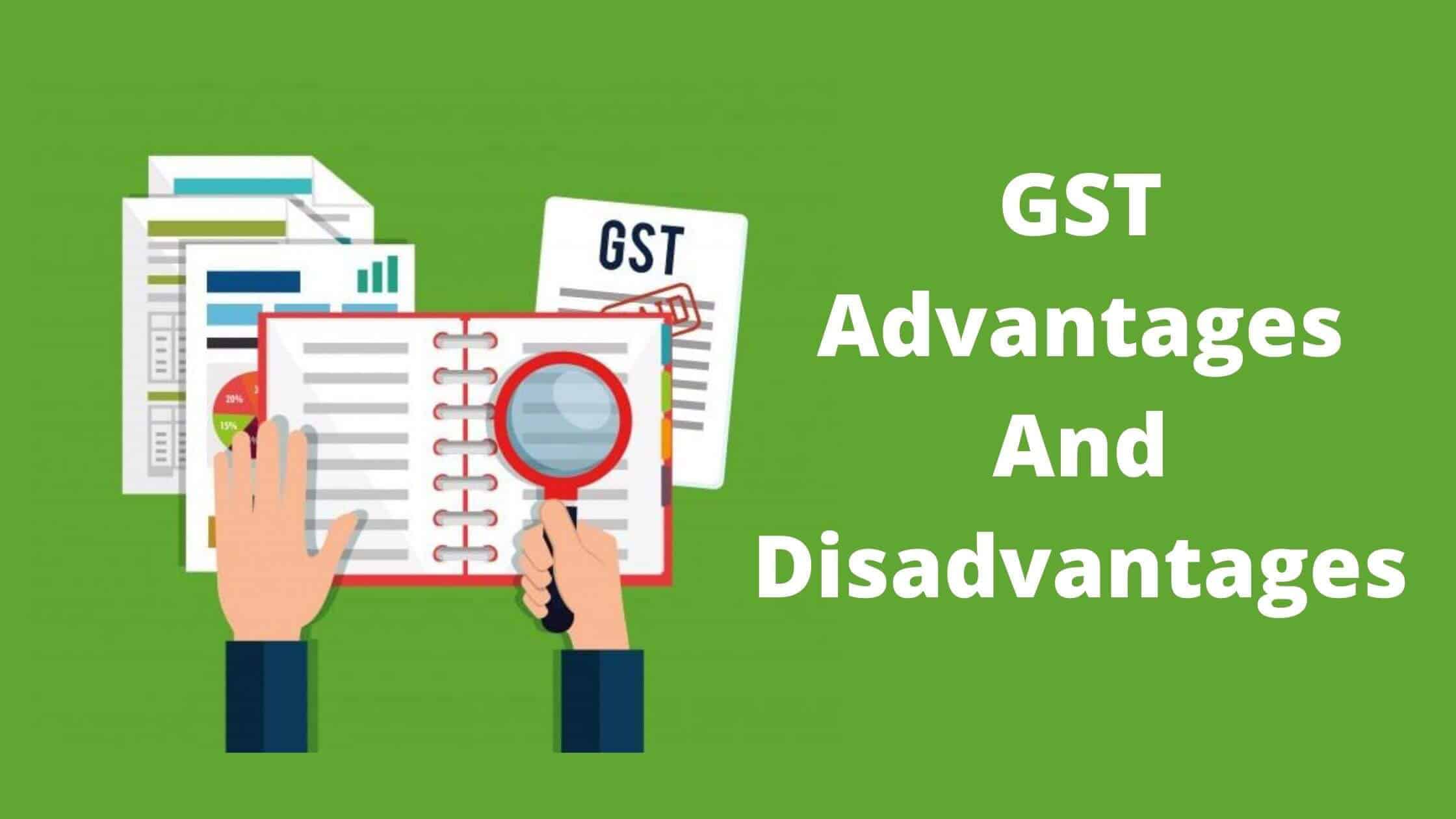Advantages and Disadvantages of GST
Welcome to Infinity Compliance,
The Goods and Services Tax aims to scale back the amount of indirect taxes and unify the Indian market. Though it had been implemented midway within the last fiscal year, it’s its justifiable share of proponents and critics. Here’s a glance at the Advantages and Disadvantages of GST.
Advantages of GST
Removing cascading effects:
GST is comprehensive in nature that is designed to eliminate the cascading effect. The cascading effect means the tax on a legal system that pre-existed where the liabilities was passed on at every stage of the transaction. As a result, the worth (price) of the item increased. GST removes this cascading effect because the effect of the tax directly lies on the value of products and services. The burden of a tax is shifted near the buyer and benefits the industry through better cash flows and dealing capital management.
Input tax credit:
At the time of paying tax on output, the manufacturers or service providers can reduce their tax payable by the number of tax they have already paid on inputs. The average burden of taxes for the manufacturers or service providers is likely to come down. Thus, a lower price that would inculcate more consumption.
Transparency:
GST is a transparent tax system where registered retailers won’t have a price and hidden taxes. The cost of doing business would be lower.
Tax evasion:
The input credit is out there to the recipient i.e. the manufacturers or service providers on condition that the information are provided by the supplier in its return. It encourages the suppliers of goods and services and thus helps to check the evasion of taxes.
Higher threshold for registration:
Earlier tax regimes required businesses over a turnover of more than 5 lakh rupees liable to pay VAT. The limit was different in different states. However, the threshold has been increased to 20 lakh rupees in the GST regime. This means small traders and service providers are exempted.
Composition schemes for small businesses:
The tax and compliance burden on many small businesses is reduced. Further, small businesses i.e. those businesses with a turnover of 20 to 75 lakh rupees can enjoy the choice of utilizing composition schemes.
The number of compliances:
Earlier, as many taxes were levied, each had its own returns and compliances. For instance, excise, returns had to be filled monthly, service tax; quarterly or monthly, and VAT differed along states. However, after GST is imposed, there are lesser compliances. Just one unified return has to file. There are 11 returns under GST.
Improved efficiency of logistics:
Restrictions on inter-state movement of products are lessened with the imposition of one nation, one tax. Earlier, multiple warehouses had to be maintained so as to avoid the present GST and state entry taxes. Thus, increasing the operational cost. As an outcome of GST, warehouse operators are fixing units at strategic locations, rather than every other city.
Defined treatment for e-commerce operators:
Before the implementation of GST, the e-commerce sector didn’t define the sale of products. Some states would treat these as facilitators or mediators which don’t require them to register for VAT. All these differential treatments are removed under GST. The interstate movement of goods is confusion-free now.
Regulation of the unorganized sector:
Earlier construction and textile industry were largely unregulated and unorganized. Under GST, there are provisions for online compliances and payments. Thus, bringing within the accountability and regulation to those industries.
Simple and easy online procedure:
The entire process of GST (from registration to filing returns) is formed online, and it’s super simple. This has been beneficial for start-ups especially, as they do not need to run from pillar to post to urge different registrations like VAT, excise, and service tax.
DISAdvantages of GST
Being GST-compliant:
Small and medium enterprises have been away from the tax regime. They must quickly grasp the nuances of this tax regime, they’ll have to be compelled to issue GST compliant invoices.Short term business challenges:
The transition to GST can interrupt the working capital of the business within the initial phase because of the input credit lock-up.Increased operational cost:
The companies will need to train employees for being GST compliant, thus, increasing the overhead expenses. The alternative option available is to have tax professionals who are equipped to handle the changes.Online taxation system:
Unlike earlier tax regime, most invoicing was done through pen and paper. It might be difficult for smaller businesses to adopt this technologically riden change. Businesses got to upload their invoices and return forms.Multiple registrations:
In the case of Pan-India organizations with branches in more than one state in the country, it is extremely difficult to comply. In contrary to the standard belief, there’s no single compliance for an equivalent. One will have to register with every state and follow the procedures for compliance.Indigenous Manufacturing:
In contrary to the Make in India initiative, it’ll hit the manufacturing sector because the tax exemption has been reduced from 1.5 crores to twenty lakh rupees of turnover for excise duty.Revenue distribution:
Sharing of revenue for goods and services listed within the concurrent list may be a point of contention.Various GST’s:
The idea of one nation, one tax is somewhere hindered due to the compliance mechanism of GST which involves Centre GST, State GST, and Integrated GST.Effect on discount and reward program:
GST has an impact on discount and reward programs such that the goods are being taxed on the rates pre-discount. In contrast to the present, earlier goods were taxed post discounted prices.Complexities for the businessman:
The GST Act has given the control of businesses to central and state government. Thereby, binding the businessman bylaws. This has raised the complexity for several businessmen across the country.This is the “Advantages and Disadvantages of GST” list.
You can always follow us on Facebook to get notified of new blogs like this, by clicking here. Follow Us Now !!!
Thanks for visiting our blog. (Advantages and Disadvantages of GST)
HAVE A GOOD DAY.



